
Review: TelyHD
Tely Labs stand-alone video conferencing device.
Review:/ Andy Ciddor
Alchemedia Publishing, the publishers of AV, AudioTechnology, Venue, Digital Signage and Video & Filmmaker magazines and The Guerrilla Guide to Recording is similar to an increasing number of small enterprises in Australia, in having a number of offices scattered about the country, all working on different aspects of the same projects.
Primarily for lifestyle reasons, our sales, accounts, administration and subscription office is in Sydney, our editorial and design office is in regional Victoria, and we have editors working from offices in the suburbs of Sydney, Melbourne and Hobart, and from south-western WA. Clearly we need a mesh of communications systems to allow us to co-ordinate our activities.
For moment-to-moment quick casual connections we depend heavily on instant messaging, using various clients for AOL’s messaging platform, mostly in the guise of Apple’s iChat for our Mac desktops. For normal voice communications and, up to four-way conference conversations between desks, we use our VoIP virtual PABX which is scattered far and wide. When the conferences reach outside our VoIP network we’ve taken a leaf from InfoComm’s book and use GoToMeeting (GTM) from Citrix, a hosted system with clients for everything from a dumb touch-tone telephone, to a desktop computer and the current generations of handheld devices. In addition to vanilla voice conferencing, GTM has the capability for small-image video conferencing and screen sharing on suitably-capable endpoint devices.
While we don’t have the budget to own or operate an enterprise-level videoconferencing system with dedicated conference rooms, life-size screens, movement-tracking PTZ cameras and the like, we do see quite a few such systems in our travels around the AV universe, and realise that a facility of that ilk would suit the face-to-face communications style preferred by some people in the company. This means we’re always on the lookout for cost-effective solutions that may somehow fulfil our high conferencing aspirations and also meet our budgetary goal of spending very little.
PROBLEM SOLVER
As the person on staff least ignorant about IT and communications, I’m responsible for these areas of our activities, so after spotting the Tely Labs folk at the recent InfoComm show in Orlando, I leapt at the opportunity to try out its TelyHD device for the purposes of both a product review and the field trial of a candidate for our dream teleconferencing system.
The TelyHD unit is most of a conferencing system in a single compact device that resembles an oversized web cam. The only components required to complete the conferencing system are a screen and loudspeakers, the very components usually found in the television set that it’s designed to mount on. So in the world of Tely Labs, a fully-functional HD video conferencing station consists of a standard HD-capable television with an HDMI input connector, plus a $299 TelyHD.
The TelyHD unit is based on the Android operating system which was developed by Google for devices such as smart phones, tablet computers, TVs, PVRs, media players and smart fridges. It features a video camera (complete with essential privacy shutter), a four-microphone directional sound array, a USB port, an RJ-45 style Ethernet port, a mini-HDMI connector, an SD card slot and an input socket for the DC power supply. There’s a well-designed non-slip bracket device that enables the TelyHD to sit stably atop a wide range of sizes of monitor and television set. This design should be immediately adopted by the entire webcam industry to replace the clumsy and unstable brackets found on so many products.
The hardest part of setting up a Tely HD system is locating an HDMI port on your monitor or television and a spare socket on a power board for the plug pack. I connected the unit to one of the several Ethernet feeds that float about on my desk, but we found the on-board Wi-Fi transceiver works just as well in a clean RF environment.
As soon as the unit was powered up, it phoned home to the Tely Labs mothership and performed a firmware update before getting down to business, which is a reassuring feature in a device that’s quite probably going to live away from regular technical care and maintenance. And just a note about powering the unit up: this requires the small seven-button TelyHD infrared remote and appears to be the only function that can’t be accessed via an external keyboard, so the diminutive remote, which is a prime candidate for being pocketed or lost in the upholstery, does need to be kept on hand.
MORE INFO
PRICE
TelyHD $328.90 (inc GST)
TelyHD Pro $768.90 (inc GST)
CONTACT
Enquiries:
IPTV Australasia [email protected] 0431 395 585

TV-LIKE INTERFACING
The user interface is big and bold and TV-like and can be driven entirely from the remote control, or if you prefer, from an external keyboard connected to the USB socket on the back of the TelyHD. As the remote with its four-way directional rocker is way too confusing for a dyslexic like me, I grabbed one of the stray USB keyboards languishing in the tech cupboard, but I imagine that most people will want the freedom of movement offered by a wireless keyboard and plug its miniature transceiver dongle into the USB port. In the end, entering your connection details and login information using the remote’s directional rocker to select the characters one-at-a-time from an on-screen keyboard is a bit clunky, and reminded me of the grief of entering the name of the highest scorer in ancient arcade games. (Not that I have any direct experience of this, as dyslexics never get high scores in arcade games.)
The interface is quite simple to follow with adequate prompting, although I have the feeling the design was adapted from a device with much lower screen resolution. As there is little-to-no-likelihood of finding a monitor or a television set with an HDMI connector that can’t handle at least 720p, it seems a bit of a waste to have an interface that looks a bit like it came from an early 320 x 240-pixel phone or an Atari TV games platform. This doesn’t reduce the functionality of the system but it does unnecessarily limit the amount of information displayed on each screen and thus makes some tasks such as finding a contact from a list much slower and more tedious.
COMMON AS SKYPE
The communications engine on the base models of the TelyHD is the well-tested and almost universally-known Skype. If you already have a Skype login you can be up and teleconferencing in no time flat, and if you don’t have an account, the TelyHD’s Skype client will lead you quickly through the process of acquiring one. Whilst Skype may have its moments as videoconferencing platform, it’s very well known and for point-to-point calls between Skype members, you can hardly complain about the price of nothing at all. With Skype running through TelyHD on a big screen television and a not too ratty connection, you can imagine you’re playing at the top end of town with their systems costing hundreds of times as much.
If you want to up the ante in your conferencing to professional SIP-based networks, the TelyHD has an built-in SIP client. If you don’t have access to such a network you can subscribe to Tely Labs’ TelyCloud service which is a packaged version of Skype’s business client that enables up to six-way conferencing between Skype subscribers.
If you want to connect your TelyHD system to people who are on other teleconferencing systems or who have no existing teleconferencing facilities at all, Tely Labs has a partnership arrangement with the client-agnostic, cloud-based conferencing service, BlueJeans. Through the BlueJeans gateway your TelyHD can join a virtual conference of attendees on any platform from Cisco TelePresence, LifeSize, or PolyCom to a web browser on a notebook, a SIP client, a smart phone or a tablet.
If you need to share the screen contents of a computer with a TelyHD conference, Tely Labs has a Windows application that allows a machine on the same network as the TelyHD to make its screen available for display. And on the subject of software, there’s also a built-in, fully-functional web browser as part of the system.
There’s also an audio extension device that can be placed between multiple meeting participants to provide better mic and speaker levels for all participants. Unfortunately, we didn’t have one of these to test.

TELY KINETIC
For our trial we installed a TelyHD unit on top of one of the 27-inch HDMI-capable monitors on my desk in Hobart and the other on an HDMI-capable 24-inch monitor on my other desk, in our Editorial office in regional Victoria. We made calls between these TelyHD endpoints and I also called the TelyHD sales people in the home office of IPTV Australasia, which loaned me the evaluation units.
We were generally very pleased with the operation of the units under the field conditions that we would be using if we adopt the technology. With the exception of the three-contacts-per-screen Skype directory which is pretty clumsy to navigate when you have dozens of people on your contact list, we managed to get the system to do what we wanted most of the time. Almost all the calling and connection issues we encountered were familiar Skype problems rather than anything originating with the TelyHD devices.
The only disappointment we had was with the audio gating and echo-cancellation in our conversations. The Editorial office has a bit of an acoustic problem when it comes to conferencing, as we already knew from using the mics in the iMac desktop systems for our GoToMeeting sessions.
With two, large, connected offices, each with sweeping 1940s-style bay windows and acoustically-bright wall and floor treatments, it’s quite common to find that the person across the central Editorial desk or in the adjacent Design office comes through the iMac’s microphone at least as clearly and as loudly as the person actually making the call. As everyone in the office listens to their own music or video on isolating headphones, and most people use telephone headsets with tight-pattern boom microphones the situation is generally manageable, but like the iMacs, the mic array on the TelyHD did an inadequate job of cancelling the extraneous noise, even when the caller was sitting was sitting quite close to the monitor and TelyHD unit.
However, the biggest disappointment was the inadequate echo cancellation in the TelyHD. In every conversation the speakers were gated out the moment somebody else spoke (or somebody’s phone in the adjacent office rang). We’ve come to acknowledge that you can’t do better than half-duplex conversations with cheap speaker phones, but teleconferencing phones have been reliably handling active echo cancellation for a couple of decades, albeit at a high price in the beginning, but DSP processing power is now dirt cheap and the echo-cancelling algorithms to drive them are generations old. Fortunately this is essentially a software problem, and I’m aware that the TelyHD is in constant development, so I feel confident that very soon when TelyHD units call home to Mum they’ll be given some improved echo-cancelling features to rid them of this flaw.
HD FOR UNDER A GRAND
All up the TelyHD is a piece of disruptive technology in the videoconferencing space. By introducing the sub-$1000 full-HD conferencing endpoint, a whole new range of applications become available and will no doubt democratise videoconferencing even further than we have ever imagined.

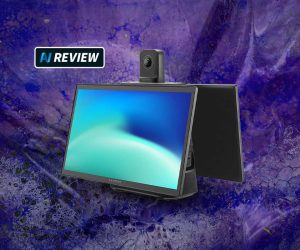
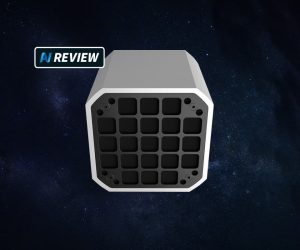

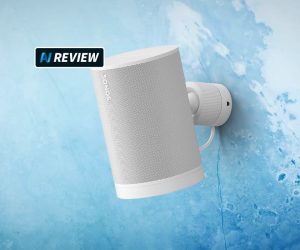
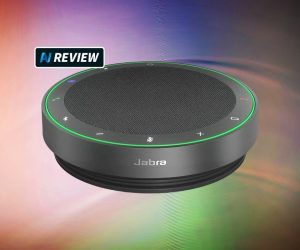
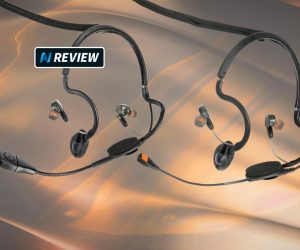
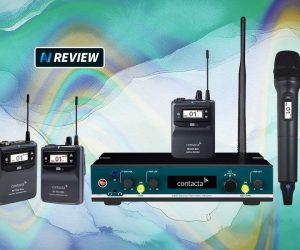
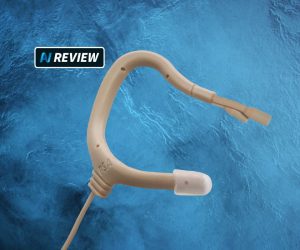
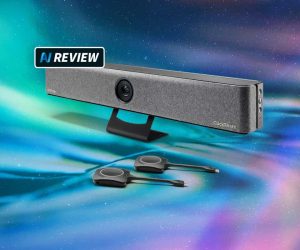
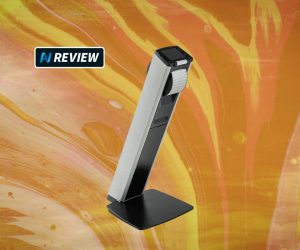
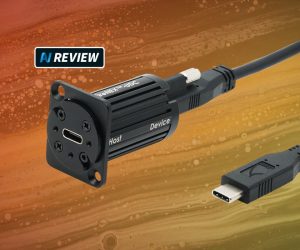
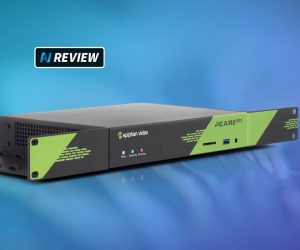


RESPONSES